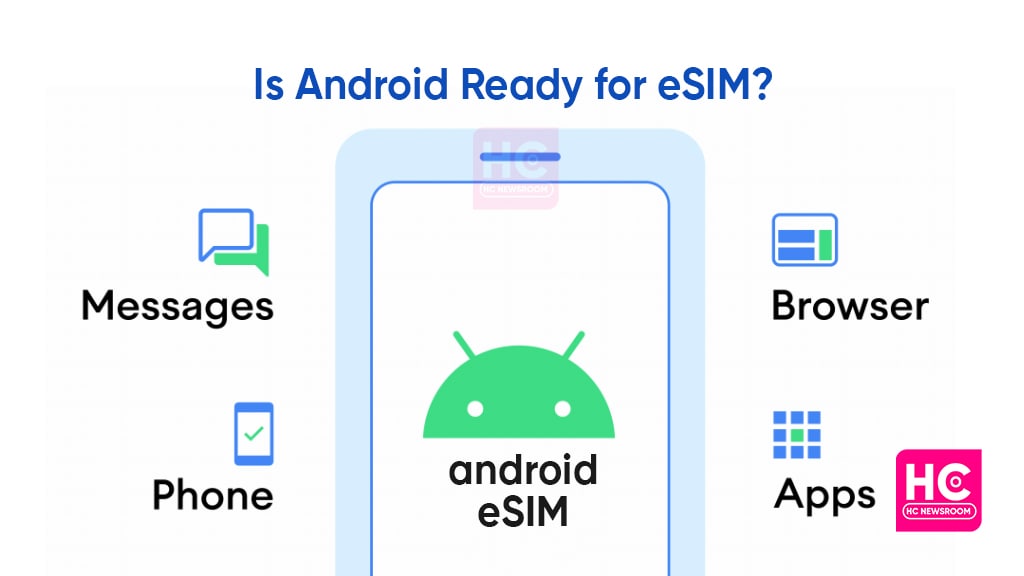Android
eSIM could be a trouble for Android phones

Android phones have several features that are superior to other handset models, except for eSIM technology. No doubt, Android will soon follow in Apple’s footsteps to adopt eSIM on its surface. But the question arises – Is this tech useful for Android users?
Apple is the first company to begin the eSIM concept. With time, the American tech maker has mastered this concept and made its consumers comfortable with the technology. Meanwhile, Android is a novice and has to learn a lot in this segment.
What is eSIM?
Generally, eSIM stands for embedded SIM. It is a virtual edition of a physical SIM card that is already present in your smartphone’s system. It is an in-built chip attached to the motherboard and supports numerous active connections at one time.
Similar to the traditional SIM card, this virtual element also acts as a unique identifier for telecom services and other users. In recent times, we have caught this term with iPhones, a few Google Pixel series, Samsung phones and smartwatches, and more.
Advantages: Convenience and Security
After the description, you might be thinking about how eSIM could offer benefits to its users. Consequently, you will experience immense convenience with this virtual chip. If you don’t like to swap your SIM cards and phones frequently, then eSIM could serve as a perfect option for you.
Moreover, this technology will save you from making several rounds to the telecom service centers. Another significant benefit is security. Yes, it is more secure than the old SIM cards, as one cannot remove it from the phone if lost or stolen.

eSIM still could be a trouble for Android users!
Although the mini virtual component is quite efficient to use. Yet, it can still prove a headache for Android users. Despite convenience and security terms, the technology might trouble users.
Traveling: One of the biggest concerns would be international traveling. It’s quite easy to buy and swap a physical SIM card while moving abroad.
However, you cannot use this trick with an eSIM. Though services like GigSky and AirAlo support eSIM facilities for foreign travel. But, these are quite expensive in comparison to the old SIM card swapping. Further, not every country supports the eSIM standard at present. Thus, it could create new troubles for you.
Supports only flagship devices: This is another restriction over consumers. eSIM only supports flagship devices. As a result, you cannot opt for a budget-friendly device if you demand an eSIM experience.
Switching Devices: If you are a person who often likes to purchase new devices then eSIM could act as a severe problem for you. Unlike physical SIM cards, you can not simply transfer the eSIM from your old device to a new one.
Although Google Fi makes this switch easy for Pixel devices, so do the T-Mobile carriers for Samsung. But operators like Verizon don’t have such support. On the flip side, you can easily pull out physical SIM cards at times of urgency. But this action becomes stagnant with eSIM.
Moreover, every time you want to switch your phone you need to turn toward the telecom operator. Eventually, you will hand over most of your device controls to your operator’s hands.
After such traits, it’s not possible to say that Android phones are ready to completely adopt the eSIM technology. With evolution, probably we could find Android phones following the eSIM trend. Yet, if it happens then Android needs some major learnings on this matter.






